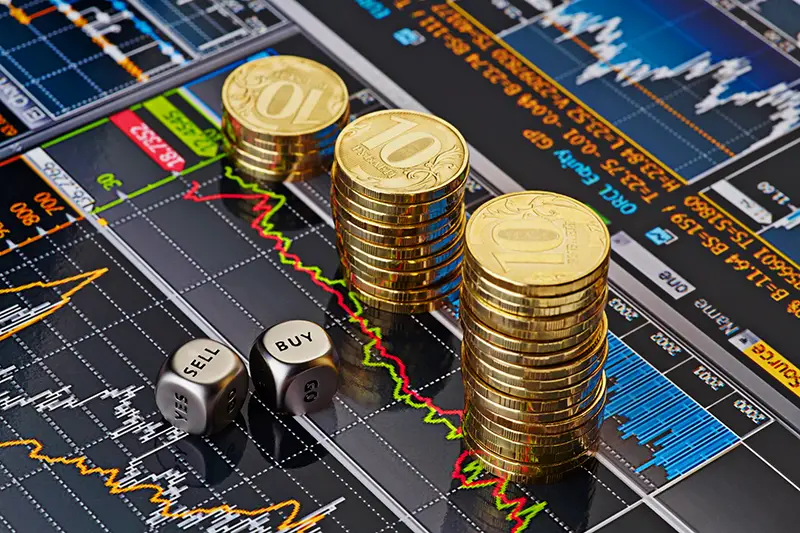Click here to get this post in PDF
We experienced significant market changes and volatility during the pandemic, and even as we work to resume normal life, the market environment is still unstable.
Even though the market’s low volatility may cause many investors to lose money, astute traders are aware that the stock market rarely experiences prolonged periods of stability.
The stock market has had a lot of volatility over the last year, and it’s obvious that the storm still raging since 2021 still holds a lot of uncertainty. In a down turning market, no plan can ensure success or guard against loss.
By adhering to these recommended practices, investors may assist in maintaining returns and portfolio preservation despite the unpredictability.
What Is Market Volatility?
The term “volatility” in investments refers to periods of erratic and occasionally abrupt price changes. High volatility is defined as a price’s quick and significant swings between new highs and lows.
In terms of statistics, volatility is the annualized return standard deviation of a market or investment over a certain period. Volatility might affect a single firm rather than the entire market.
For instance, a significant weather occurrence in a key region for oil production might increase oil prices.
A given industry’s stock values may decline as a result of increasing regulation by the government because of higher labor and compliance expenses.
Stabilizing Investments In A Volatile Market
Fighting unstable conditions is a constant agenda in the investment market. Therefore, you should learn the techniques to combat such situations to prepare yourself for any challenging situation—
Portfolio Diversification
Diversification is important since it enables investors to take on less risk. Investors should give less risky projects priority during erratic markets. During uncertain times, one should steer clear of investments like meme stocks and European equities.
A decent rule of thumb is to invest at most 3% of your portfolio in any stock and rebalance your allocation once a year to minimize risk.
If you want to give your portfolio a boost, you might need the luxury of a very extended holding time. In this case, consider investing in Cryptocurrencies. Use online Crypto trading platforms like the-teslerapp.com to keep track of the market and make informed investments.
Given the potential for development, developing markets could be one area to watch going forward. In addition, because these asset classes react to volatility in various ways, diversification is essential when investing in a volatile market.
Diversification cannot ensure a profit or shield you from losses in a down market, just like any other approach.
Evaluate Your Risk Tolerance
What is my risk appetite? This is one of the most important questions you should ask yourself as an investor. Every investment carries a certain level of risk, so it’s critical to assess that risk and understand what level you can manage.
Your portfolio will need to provide $40K of that income until age 90 if you want to retire at 67 and anticipate receiving $50K from Social Security each year. Here, you may set up your diversification strategy to help mitigate hazards.
Understanding your risk tolerance and using diversification strategies together are the keys to improving portfolio performance.
Plan For The Long-Term
Markets often have ups and downs; historically, even bear markets have been brief. However, emotional responses to short-term market conditions might increase your vulnerability to subsequent financial losses.
Investors looking to enhance their returns should always focus on the long term. Investors shouldn’t let a little period of uncertainty make them forget about their long-term objectives. Investors looking to enhance their returns should always focus on the long term.
Loss of the principal invested is one of the hazards of investing. In addition, foreign investments come with unique dangers, such as higher economic, political, and currency risks.
The Final Thought
Generally speaking, market volatility rises when investors are more fearful or uncertain. Both might result from a global economic crisis or a response to natural catastrophes or geopolitical events.
For instance, market volatility increased due to the 2008–2009 credit crisis, which sparked the great recession. When Russia invaded Ukraine in 2022, it also grew.
Your portfolio’s volatility might be decreased in a simple or sophisticated manner. For example, diversifying a portfolio broadly while retaining a small portion of cash is one of the most common methods for lowering volatility.
The historical price changes of securities are used to calculate volatility. A portfolio’s volatility will increase significantly if that market undergoes a correction when it is strongly allocated to that market.
Disclaimer: This article is not intended to be a recommendation. The author is not responsible for any resulting actions of the company during your trading/investing experience.
You may also like: Growth vs Value Stock — Which are More Profitable?
Image source: Depositphotos.com

